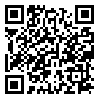Volume 22, Issue 3 (September 2024)
Iranian Rehabilitation Journal 2024, 22(3): 437-448 |
Back to browse issues page
Download citation:
BibTeX | RIS | EndNote | Medlars | ProCite | Reference Manager | RefWorks
Send citation to:



BibTeX | RIS | EndNote | Medlars | ProCite | Reference Manager | RefWorks
Send citation to:
Shahid Z, Poblete Dioso R I, sarfraz S, ijaz M. Comparing Bobath Versus Task-oriented Approach in Young Stroke Patients. Iranian Rehabilitation Journal 2024; 22 (3) :437-448
URL: http://irj.uswr.ac.ir/article-1-2004-en.html
URL: http://irj.uswr.ac.ir/article-1-2004-en.html
1- Department of Health Sciences, Faculty of Sciences, Lincoln University College, Petaling Jaya, Malaysia.
2- Fatima Jinnah Medical College, Lahore, Pakistan.
3- Shaukat Khanum Hospital, Lahore, Pakistan.
2- Fatima Jinnah Medical College, Lahore, Pakistan.
3- Shaukat Khanum Hospital, Lahore, Pakistan.
Abstract: (2937 Views)
Objectives: This study determines the effect of the Bobath approach versus task task-oriented approach for motor activity, activities of daily living and quality of life (QoL) in young stroke patients.
Methods: Based on the inclusion and exclusion criteria, 60 patients participated in this study from different clinical setups (30 subjects in each group). The patients were analyzed after a three-month follow-up with the following three assessment tools: Barthel index (BI) scale for assessment of activities of daily living, motor assessment scale (MAS) for motor function and stroke-specific QoL scale (SSQOL) in post-stroke patients.
Results: This study included two treatment groups (group A and group B) with an equal distribution of participants. Paired sample t-tests were applied to compare pre and post-treatment measures within each group. The results indicated significant changes in several measures. In pair 1 (pre-BI vs post-BI), the index showed a significant improvement after treatment. In pair 2 (pre-MA vs post-MA), the index also showed a significant improvement after treatment. However, in pair 3 (pre-SSQOL vs post-SSQOL), there were no significant changes in the SSQOL index. Furthermore, the independent sample t-tests were conducted to compare the measures between the groups. Accordingly, the results showed significant differences in some measures. In terms of pre-treatment BI and post-treatment BI, group A showed a significantly higher improvement after treatment. Meanwhile, group A showed a significantly higher improvement after treatment in pre-treatment MA and post-treatment MA. However, in pre-treatment SSQOL and post-treatment SSQOL, there were no significant differences between group A and group B in terms of SSQOL after treatment.
Discussion: This study shows improvement in both treatment groups and effectiveness after the assessment of three different tools which assessed the overall body function of young stroke patients. Following the application of these tools, this study concluded which treatment is most effective as compared to other approaches in young stroke patients. However, in previous studies in which Bobath treatment was also compared with the motor relearning approach in geriatric stroke patients, in patients treated according to motor relearning, in patients who had a short stay in hospitals and those who were treated according to both treatment groups demonstrated effective improvement of body function; however, that study confirmed better results according to gender-wise description, i.e. women treated by motor relearning programme (MRP) are more effective and have better results compared to the Bobath approach.
Methods: Based on the inclusion and exclusion criteria, 60 patients participated in this study from different clinical setups (30 subjects in each group). The patients were analyzed after a three-month follow-up with the following three assessment tools: Barthel index (BI) scale for assessment of activities of daily living, motor assessment scale (MAS) for motor function and stroke-specific QoL scale (SSQOL) in post-stroke patients.
Results: This study included two treatment groups (group A and group B) with an equal distribution of participants. Paired sample t-tests were applied to compare pre and post-treatment measures within each group. The results indicated significant changes in several measures. In pair 1 (pre-BI vs post-BI), the index showed a significant improvement after treatment. In pair 2 (pre-MA vs post-MA), the index also showed a significant improvement after treatment. However, in pair 3 (pre-SSQOL vs post-SSQOL), there were no significant changes in the SSQOL index. Furthermore, the independent sample t-tests were conducted to compare the measures between the groups. Accordingly, the results showed significant differences in some measures. In terms of pre-treatment BI and post-treatment BI, group A showed a significantly higher improvement after treatment. Meanwhile, group A showed a significantly higher improvement after treatment in pre-treatment MA and post-treatment MA. However, in pre-treatment SSQOL and post-treatment SSQOL, there were no significant differences between group A and group B in terms of SSQOL after treatment.
Discussion: This study shows improvement in both treatment groups and effectiveness after the assessment of three different tools which assessed the overall body function of young stroke patients. Following the application of these tools, this study concluded which treatment is most effective as compared to other approaches in young stroke patients. However, in previous studies in which Bobath treatment was also compared with the motor relearning approach in geriatric stroke patients, in patients treated according to motor relearning, in patients who had a short stay in hospitals and those who were treated according to both treatment groups demonstrated effective improvement of body function; however, that study confirmed better results according to gender-wise description, i.e. women treated by motor relearning programme (MRP) are more effective and have better results compared to the Bobath approach.
Keywords: Motor assessment Scale (MAS), Barthel index (BI), Stroke specific quality of life (SSQOL), Task-oriented
Article type: Original Research Articles |
Subject:
Physiotherapy
Received: 2023/07/1 | Accepted: 2023/11/25 | Published: 2024/09/1
Received: 2023/07/1 | Accepted: 2023/11/25 | Published: 2024/09/1
Send email to the article author








